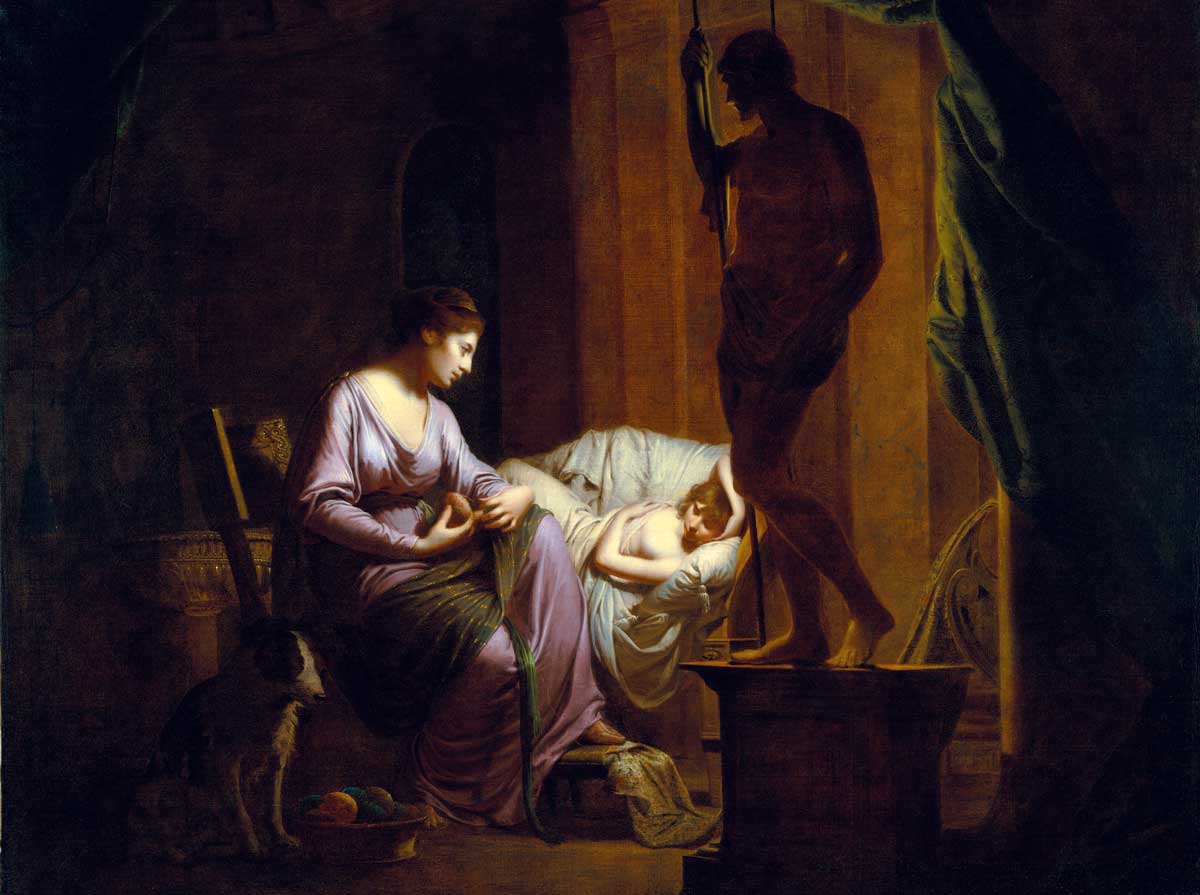Penelope | History Today - 2 minutes read

Josiah Wedgwood, the great industrialist and pottery designer, commissioned Joseph Wright of Derby to paint a tribute to female loyalty and industry. Unsurprisingly, Wright took as his subject Penelope, the wife of the Greek hero Odysseus, King of Ithaca, who had left for the Trojan Wars. Despite Odysseus being absent for 20 years, presumed dead, Penelope rejected the attentions of 108 suitors by employing various strategies.
In one example, she had been told by a god to weave a fine cloth on her loom so that, when suitors approached her, she could say: ‘My lords, I, too, fear that my husband no longer lives. You are impatient to marry me, but be not hasty, I pray. First I would finish this shroud for Odysseus’ father Laertes, that I have not toiled for naught, lest on the day he is destined by grievous fate to die, I am rebuked by the women of this place for allowing so fortuned a man to lie without a shroud.’
The plan to weave and then repeatedly unpick the shroud worked for three years, until Melantho, an unfaithful slave, revealed the ruse, leaving Penelope no choice but to complete the cloth and confront the possibility of remarriage.
In the painting, Penelope watches over her and Odysseus’ son, Telemachus, as she winds the thread. The silhouette of the statue of Odysseus is a reminder of his continuing presence despite his physical absence. The dog, Argo, will recognise his master when he does return, disguised as a beggar, and will die soon after. Penelope remains faithful.
Source: History Today Feed